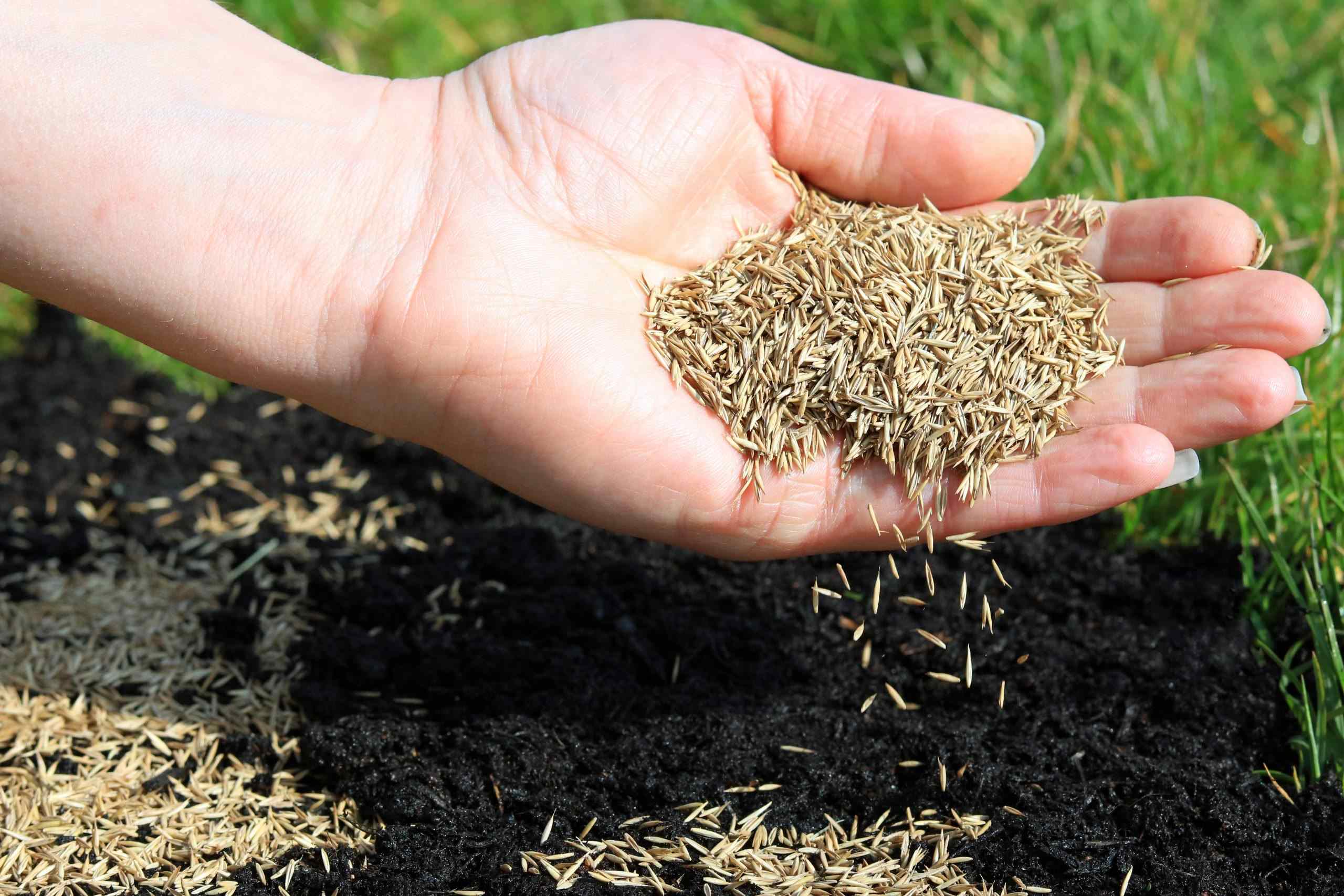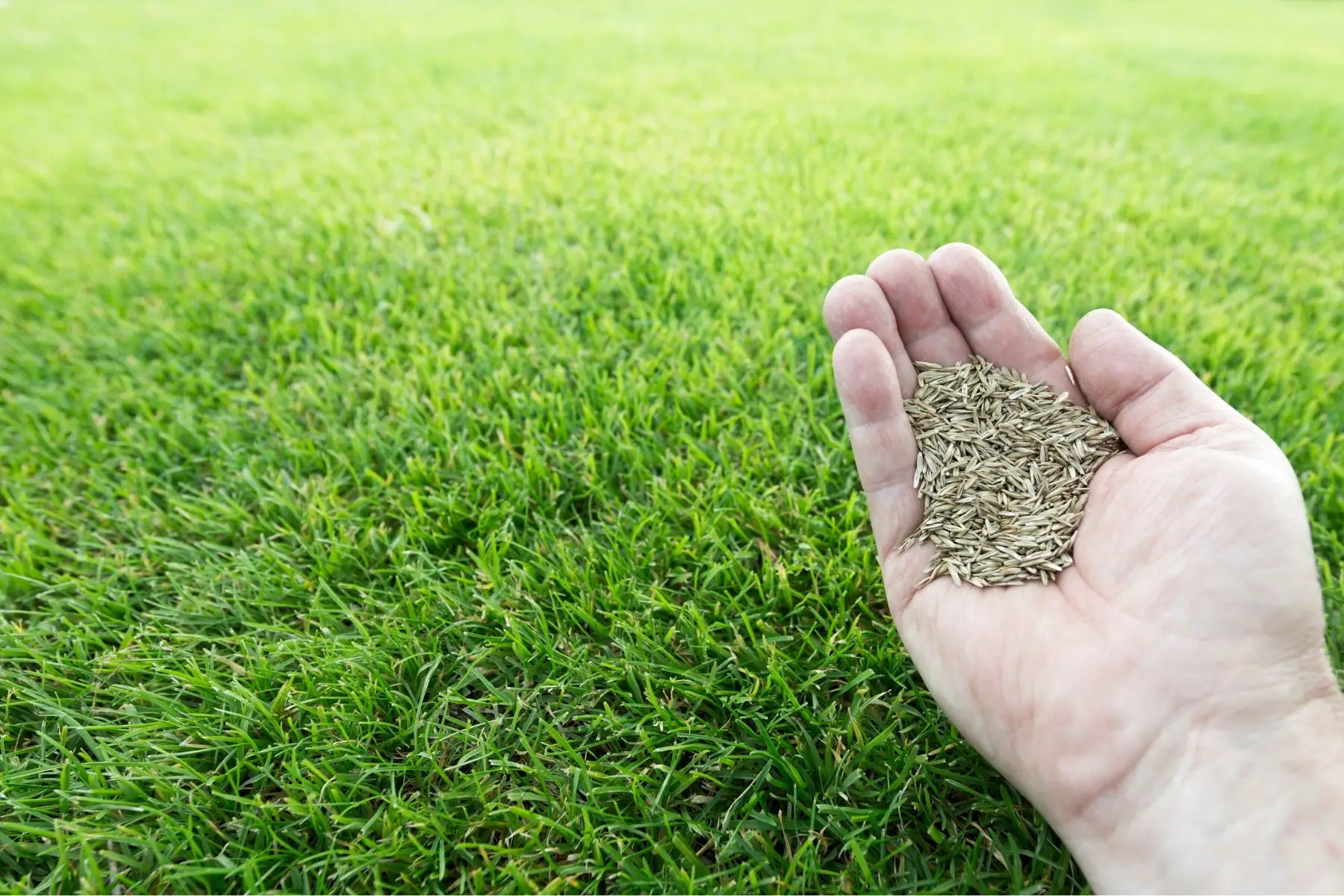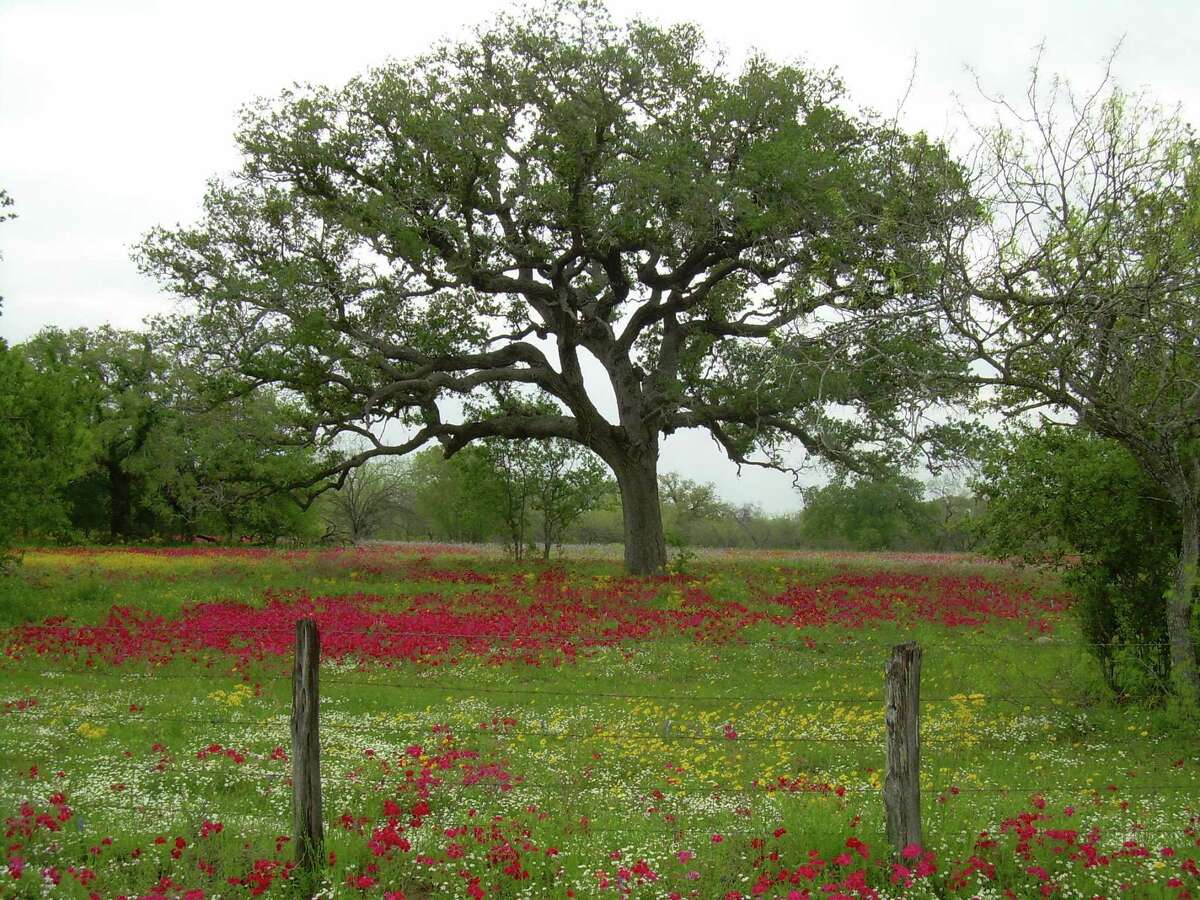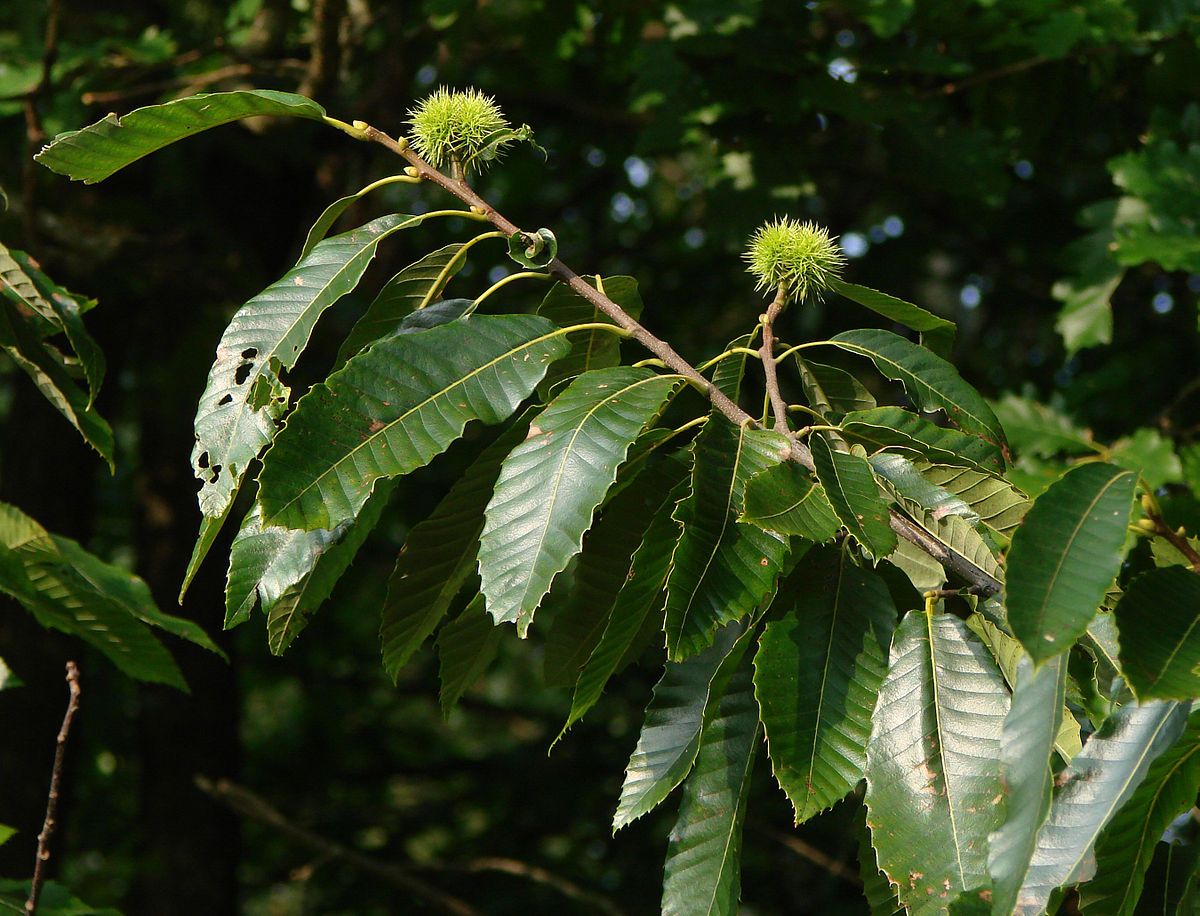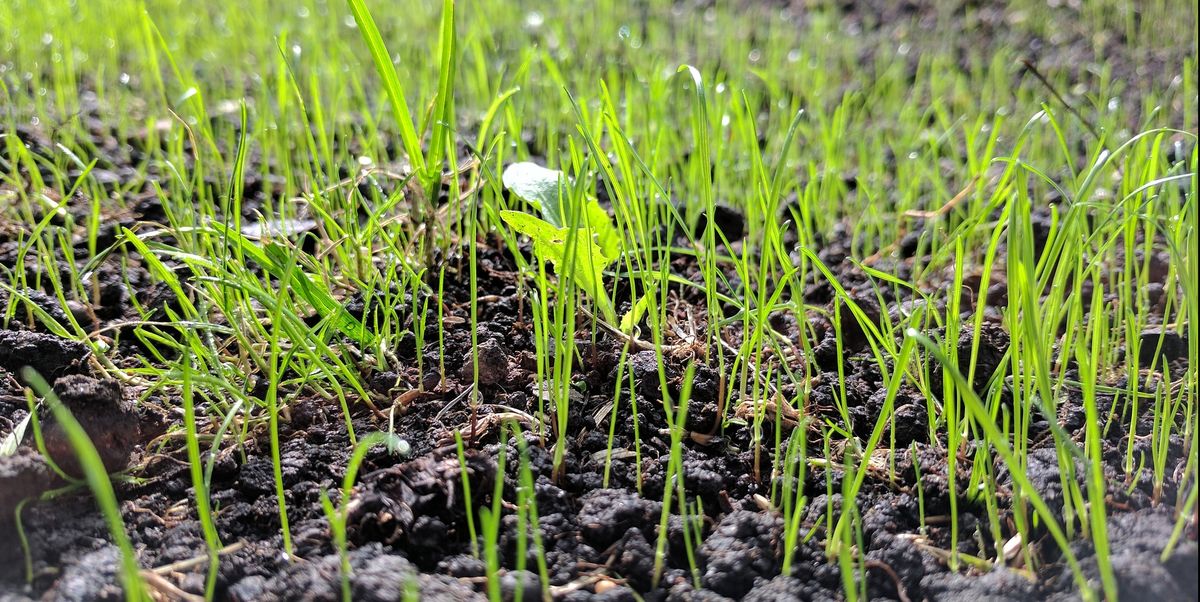Home>Gardening Techniques>Plant Care>How To Grow Grass Under Trees
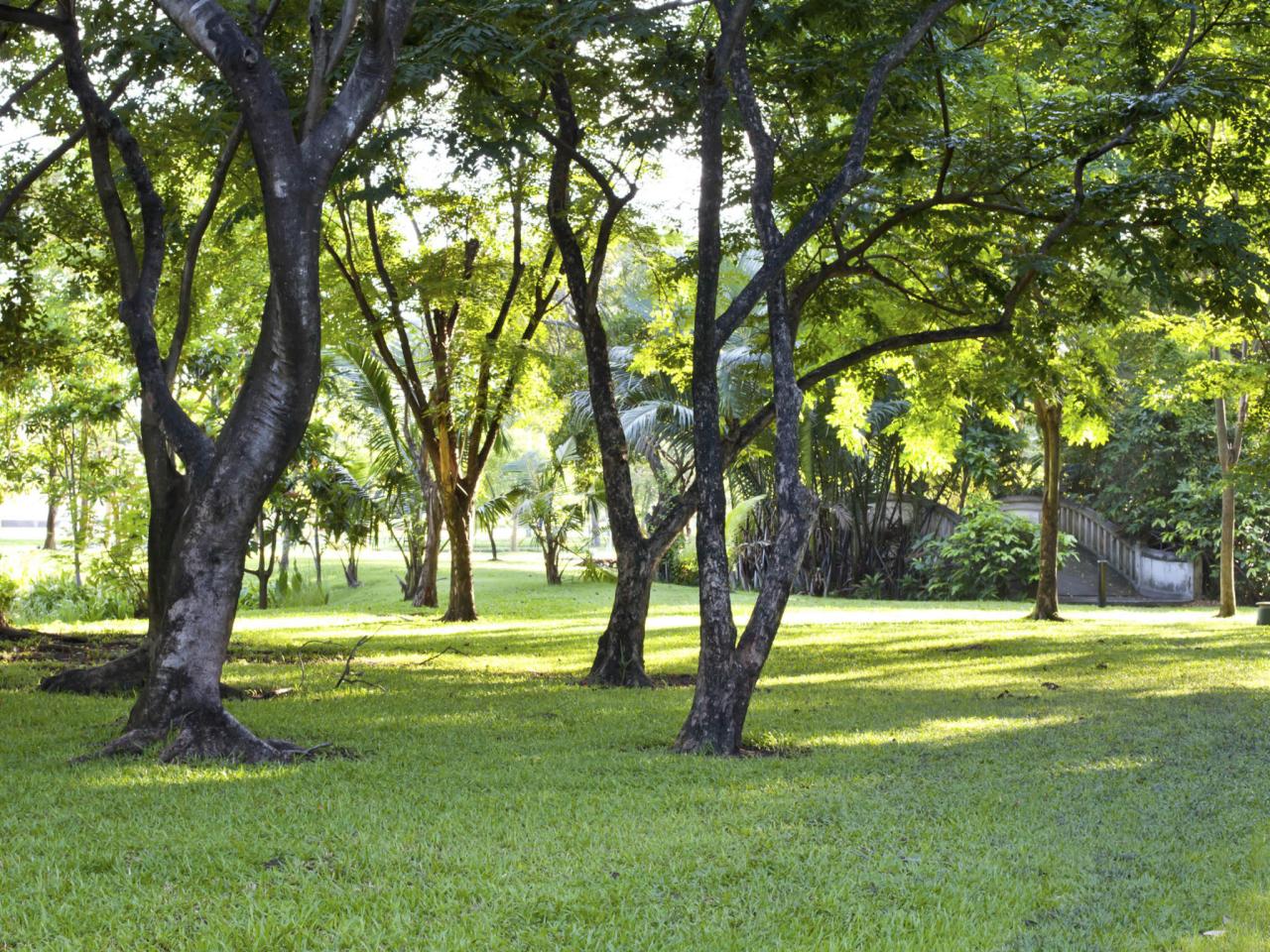

Plant Care
How To Grow Grass Under Trees
Modified: February 10, 2024
Want to grow grass under trees? Learn the best plant care techniques for thriving grass in shaded areas and create a beautiful landscape.
(Many of the links in this article redirect to a specific reviewed product. Your purchase of these products through affiliate links helps to generate commission for Chicagolandgardening.com, at no extra cost. Learn more)
Table of Contents
Introduction
Growing grass under trees can be a challenging task for any homeowner or gardener. The combination of shade, competition for nutrients, and the presence of tree roots can make it difficult for grass to thrive in these areas. However, with the right knowledge and strategies, it is possible to create a lush and healthy lawn even under the shade of trees.
In this article, we will explore the challenges involved in growing grass under trees and provide you with practical tips and techniques to overcome them. Whether you want to create a serene picnic area or simply enhance the beauty of your landscape, understanding the specific needs and requirements of grass in this setting is crucial.
We will begin by discussing the importance of assessing soil conditions and choosing the right grass variety. Understanding the unique characteristics of the soil in the shaded areas under trees will help you determine the best approach to achieve optimal grass growth. Additionally, selecting a grass variety that can tolerate shade and has a deep root system will increase the chances of success.
Next, we will cover the necessary steps for preparing the area before planting grass. Proper soil preparation is essential to provide the right foundation for grass growth. We will outline techniques such as removing debris, loosening the soil, and adding organic matter to improve the soil quality.
One of the biggest challenges in growing grass under trees is providing adequate water. Trees compete with grass for water, and their extensive root systems can make the soil in this area dry and compacted. We will discuss various watering strategies, including deep watering and using soaker hoses, to ensure that the grass receives sufficient hydration.
Another factor to consider when growing grass under trees is the amount of shade that the tree provides. While grass needs sunlight for photosynthesis, it also requires some degree of shade tolerance. We will explore methods to manage shade, such as pruning tree branches and selecting shade-tolerant grass varieties.
Dealing with tree roots is another significant challenge. Tree roots can outcompete grass for nutrients and water, making it difficult for grass to establish and grow. We will offer solutions for managing tree roots, including creating physical barriers and using specially designed root-friendly fertilizers.
To protect grass from damage caused by foot traffic, pets, or equipment, we will discuss strategies such as creating designated pathways, installing stepping stones, and using protective barriers. These measures will help preserve the integrity of the grass and maintain its overall health.
Finally, we will provide guidance on how to maintain and care for the grass under trees, including mowing techniques, fertilization schedules, and pest management. These essential tasks will help keep the grass vibrant and thriving throughout the year.
By implementing the knowledge and techniques shared in this article, you can successfully grow grass under trees and create a beautiful, green landscape even in challenging conditions. Let’s dive into the details and discover how you can achieve the lawn of your dreams under the shade of your trees.
Understanding the Challenges of Growing Grass Under Trees
Growing grass under trees presents unique challenges that can make it a daunting task for any gardener or homeowner. The combination of shade, competition for nutrients, and the presence of tree roots can hinder grass growth and make it difficult to maintain a lush and healthy lawn. However, understanding these challenges and implementing the right strategies can help you overcome them and create a thriving grassy area beneath your trees.
One of the primary challenges of growing grass under trees is the limited amount of sunlight that reaches the ground. Trees provide shade, which is essential for their own growth, but it can be detrimental to the grass. Without adequate sunlight, grass struggles to carry out photosynthesis, a vital process for its growth and development. As a result, the grass may become thin, weak, and prone to disease or weed infestations.
Another challenge is the competition for nutrients and water. Trees have extensive root systems that absorb the majority of nutrients and water from the soil. Grass in the vicinity of trees has to compete with these roots, often leading to nutrient deficiencies and drought stress. The grass may become yellow, thin, or develop patches of dead or dormant grass.
In addition, tree roots can physically impede grass growth. They create a dense network that can compact the soil and prevent the grass’s roots from spreading and accessing the necessary resources. This compaction restricts airflow and water penetration, making the soil less favorable for grass to establish and thrive.
Furthermore, tree roots are often close to the soil surface, making it challenging to mow over them without damaging the grass or the tree roots themselves. This obstacle may require careful maneuvering of lawn equipment or the use of specialized tools to ensure that the grass is mowed properly.
Despite these challenges, understanding how trees and grass interact can guide you in finding effective solutions. By implementing strategies that address the specific needs of grass growing under trees, you can create an environment that supports healthy grass growth.
In the upcoming sections of this article, we will delve into practical tips and techniques to overcome these challenges. We will discuss how to assess soil conditions and choose the right grass variety, as well as methods to prepare the area and provide adequate water. In addition, we will explore techniques for managing shade, dealing with tree roots, and protecting the grass from damage.
By applying these strategies, you will be equipped with the knowledge and tools to successfully grow and maintain a thriving grassy area under your trees. Let’s dive into the details and discover how you can conquer the challenges and achieve a beautiful lawn in even the shadiest corners of your garden.
Assessing Soil Conditions
Before you begin growing grass under trees, it is crucial to assess the soil conditions in the designated area. Understanding the unique characteristics of the soil will help you determine the appropriate steps and treatments needed to ensure successful grass growth.
The first step is to evaluate the soil’s texture and composition. Soil texture refers to the size of the soil particles – whether it is sandy, loamy, or clayey. Sandy soil tends to drain quickly, while clayey soil retains more water. Loamy soil, with a balanced mixture of sand, silt, and clay, is ideal for grass growth. Take a handful of soil and try to form a ball. If the soil crumbles easily, it is predominantly sandy. If it forms a tight ball, it has a high clay content. A loamy soil will form a ball that holds its shape but is easy to crumble.
Next, determine the soil’s pH level, which indicates its level of acidity or alkalinity. Grass generally thrives in slightly acidic to neutral soil with a pH between 6 and 7. Conduct a soil test using a DIY kit or by sending a sample to a laboratory for analysis. Based on the results, you may need to adjust the pH level by adding amendments such as lime to raise the pH or elemental sulfur to lower it.
Assessing the soil’s drainage capacity is also crucial. Poor drainage can lead to waterlogged soil, which negatively affects grass health. After a rain shower, observe how long it takes for the water to drain away. If the soil remains saturated for an extended period, you may need to improve drainage by creating gentle slopes or incorporating organic matter such as compost to enhance soil structure.
Furthermore, consider the fertility of the soil. Grass requires essential nutrients, including nitrogen, phosphorus, and potassium, to grow and thrive. Conduct a soil test to determine nutrient levels and deficiencies. Based on the results, you can apply appropriate fertilizers to replenish the nutrients and support healthy grass growth.
Lastly, evaluate the soil’s organic matter content. Organic matter improves soil structure, drainage, and nutrient-holding capacity. Sandy soils benefit from the addition of organic matter to retain moisture, while clayey soils benefit from improved drainage and aeration. Incorporate compost or well-rotted organic matter into the soil to boost its organic matter content.
By thoroughly assessing the soil conditions in the area where you plan to grow grass under trees, you can make informed decisions about soil amendments, fertilizers, and other treatments. This knowledge will set the foundation for creating a healthy environment that supports optimal grass growth.
Choosing the Right Grass Variety
When growing grass under trees, it is essential to select a grass variety that can tolerate shade and has the ability to thrive in challenging conditions. The right grass variety will ensure successful growth and help create a lush and healthy lawn beneath your trees.
One of the key factors to consider when choosing a grass variety is its shade tolerance. Not all grass types can withstand limited sunlight. Shade-tolerant grass varieties, such as fine fescue, rough bluegrass, or certain types of turf-type tall fescue, are better able to adapt to lower light conditions. These grasses have broader and thinner leaves, allowing them to capture available sunlight more effectively.
Another aspect to consider is the grass’s ability to establish and grow in compacted soil. Tree roots can create compacted areas that make it difficult for grass roots to penetrate. Grass varieties that have deep root systems can penetrate compacted soil more easily and access the necessary nutrients and water. Species like tall fescue and Kentucky bluegrass are known for their deep root development.
Additionally, consider the local climate and environmental conditions. Grass varieties that are well-suited to your region’s specific climatic conditions will have a better chance of thriving under trees. Factors such as temperature extremes, rainfall patterns, and humidity levels should be taken into account when selecting the grass variety.
It’s also vital to consider the level of maintenance that each grass variety requires. Some grass species may have higher water or fertilizer needs, while others may require less frequent mowing or overall care. Choose a grass variety that aligns with your desired level of maintenance, keeping in mind the specific challenges of growing grass under trees.
Furthermore, consider any specific grass cultivars bred for shade tolerance. These cultivars are bred to exhibit improved shade tolerance while maintaining other desirable grass characteristics, such as disease resistance or drought tolerance. Research the availability of shade-tolerant cultivars in your area and assess their suitability for your specific conditions.
Consult with local experts, such as garden centers or county extension offices, to gain insights into the best grass varieties for your region under tree shade. They can provide valuable recommendations based on your specific location and conditions.
By choosing the right grass variety, considering factors such as shade tolerance, soil adaptability, climate suitability, and maintenance requirements, you can create an optimal environment for grass growth under trees. This careful selection process will help ensure that your grass thrives and provides a beautiful, green landscape beneath the shade of your trees.
Preparing the Area
Preparing the area before planting grass is a crucial step in ensuring the success of your grass under trees. Proper soil preparation and clearing away any obstacles will create an optimal environment for grass seed or sod to establish and thrive.
The first step in preparing the area is to remove any existing vegetation, such as weeds or unwanted grass. This can be done by manually pulling them out or using a weed killer specifically formulated for grassy weeds. Clearing away these unwanted plants will prevent them from competing with the new grass for nutrients and space.
Next, it is essential to address any soil compaction. Tree roots can compact the soil, making it difficult for grass roots to penetrate and establish. Loosen the soil by using a garden fork or a tiller, breaking up compacted areas and allowing for better root growth.
Before planting grass, it is recommended to test the soil’s pH and nutrient levels. A soil test will provide valuable information about any deficiencies or imbalances that need to be addressed. Based on the test results, you can amend the soil by adding lime to raise the pH or specific fertilizers to provide necessary nutrients.
Adding organic matter, such as compost or well-rotted manure, to the soil is also beneficial. Organic matter improves soil structure, drainage, and nutrient availability. Incorporate a layer of organic matter into the top few inches of soil, spread evenly over the area.
After soil preparation, ensure that the area is level and smooth. Remove any rocks, roots, or debris that could interfere with the growth of the grass. A smooth and even surface will provide a uniform base for the grass seed or sod and promote healthy and even growth.
If you are planning to seed the area, evenly spread the grass seed using a broadcast spreader or by hand, ensuring thorough coverage. Rake the seed lightly into the soil, or use a roller to ensure good seed-to-soil contact.
If you prefer to use sod, follow the manufacturer’s instructions for installation. Lay the sod in a staggered pattern, pressing it down firmly to eliminate air pockets. Water the sod immediately after installation to help the roots establish contact with the soil.
After planting grass seed or laying sod, keep the area moist until the grass has fully established. This may require regular watering, especially during dry periods. Avoid overwatering, as excessive moisture can lead to the development of disease or root issues.
By thoroughly preparing the area before planting grass under trees, you provide the grass with the best possible chance for success. Clearing away vegetation, addressing soil compaction, amending nutrients, and ensuring a level surface will create an optimal environment for the grass to establish and grow vigorously.
Providing Adequate Water
Adequate water is essential for the health and growth of grass, especially when growing it under trees. Tree roots can compete with the grass for water, making it crucial to provide sufficient hydration for the grass to thrive in this challenging environment.
One important aspect to consider is the frequency of watering. Instead of frequent light watering, it is recommended to water deeply and infrequently. This encourages the grass’s roots to grow deeper into the soil, promoting healthier and more drought-tolerant grass. Deep watering also helps to flush out accumulated salts from the soil, promoting better overall grass health.
When watering, make sure to moisten the soil to a depth of at least 6 inches. This will encourage the grass roots to grow deeper, accessing water that may be further away from the surface where tree roots are concentrated. Use a rain gauge or a shovel to determine the depth of moisture penetration.
Consider utilizing soaker hoses or drip irrigation to water the grass under trees. These methods deliver water directly to the root zone, minimizing runoff and evaporation. Place the hoses or drip lines strategically around the area, ensuring even coverage and avoiding excessive watering of tree trunks to prevent rot or other issues.
Monitoring the soil moisture is essential to provide the right amount of water. Use a moisture meter or simply dig a small hole to check the moisture level in the soil. If it feels dry, it’s time to water. However, avoid overwatering, as it can lead to shallow root growth, increased susceptibility to disease, and wasted water.
It is important to note that the watering needs may vary depending on the specific grass variety, climate, and soil conditions in your area. In general, aim for about 1 to 1.5 inches of water per week, including rainfall. However, adjust this amount based on observed moisture and the condition of the grass.
Timing is also crucial when watering grass under trees. Watering early in the morning allows the grass to dry out during the day, reducing the risk of prolonged dampness that can promote fungal diseases. Additionally, avoid watering late in the evening as the grass blades may remain wet overnight, creating an ideal environment for diseases to develop.
During hot and dry periods, the grass may require more frequent watering. Pay attention to signs of drought stress such as wilting, color change, or footprints remaining on the grass. Adjust your watering schedule accordingly to prevent stress and keep the grass healthy.
By providing adequate water to the grass under trees, you ensure its vitality and resilience. Deep and infrequent watering, utilizing soaker hoses or drip irrigation, monitoring soil moisture, and watering at optimal times will help the grass thrive in the presence of competing tree roots and shade.
Managing Shade
Managing shade is a critical aspect of growing grass under trees. While grass needs sunlight for photosynthesis, it also needs some degree of shade tolerance to cope with the limited direct sunlight in shaded areas. By implementing effective strategies, you can strike a balance between shade mitigation and grass health.
One method to manage shade is through selective pruning of tree branches. Trimming lower branches of the trees allows more sunlight to penetrate the ground, increasing the amount of light reaching the grass. Carefully remove lower, shaded branches while maintaining the tree’s overall health and structure. Consult with an arborist if you are unsure about proper pruning techniques or any potential harm to the tree.
Another approach is to choose grass varieties that have a natural shade tolerance. Fine fescues, such as creeping red fescue and chewings fescue, as well as certain turf-type tall fescue cultivars, are known for their ability to thrive in shady conditions. These grass varieties have adapted to lower light intensity and can maintain their growth and vigor under trees.
Consider creating dappled shade instead of dense shade. Some trees, such as those with lacy or open canopies, allow more sunlight to filter through their branches. This type of shade can be more conducive to grass growth compared to dense shade. If possible, select trees with a more open canopy to maximize the available sunlight.
Furthermore, consider the timing of shade and sunlight. As the sun moves throughout the day, certain areas under the trees may receive more direct sunlight. Observe these sunlight patterns and strategically place high-traffic areas or specific features of your lawn in areas that receive more sunlight, while allowing grass to grow in shadier spots.
Overseeding the grass with shade-tolerant grass seed can also help improve its ability to grow in shaded areas. This practice introduces new grass seed into the existing turf, promoting denser growth and increasing shade tolerance. Follow the recommended planting times for the specific grass variety you choose and ensure proper seed-to-soil contact for successful germination.
In addition to managing shade, it’s crucial to address any underlying factors that may contribute to poor grass growth. Evaluate the soil conditions and ensure proper soil preparation, including addressing any compaction or nutrient deficiencies, to enhance the overall health and resilience of the grass.
By implementing these strategies, you can effectively manage shade and promote the growth of grass under trees. Through careful planning, tree pruning, shade-tolerant grass varieties, strategic positioning, overseeding, and attention to soil health, you can create an environment where grass can flourish despite the challenges of limited sunlight.
Dealing with Tree Roots
Tree roots pose a significant challenge when growing grass under trees. They compete with the grass for nutrients and water while physically impeding its growth. However, with proper techniques and strategies, you can effectively deal with tree roots and create an environment where grass can thrive.
One approach is to create physical barriers between tree roots and the grass. Install a root barrier made of materials like plastic or metal to prevent tree roots from encroaching into the grassy area. Plant the barrier deep enough to block the lateral spread of the roots, typically around 18 to 24 inches deep. Ensure the barrier extends beyond the perimeter of the grassy area to provide adequate protection.
Another technique is to employ vertical mulching. This involves drilling holes into the soil around the tree and filling them with a mix of compost, sand, and soil. The added organic matter improves soil structure and fertility, while the porous mixture facilitates better aeration and drainage. This technique can help alleviate the competition between grass and tree roots by improving conditions for both.
Using specialized root-friendly fertilizers can also benefit grass while minimizing the stimulation of tree root growth. Look for fertilizers with low or slow-release nitrogen content, as excessive nitrogen can encourage tree root growth and lead to increased competition with grass. These fertilizers will provide the necessary nutrients for the grass without promoting aggressive tree root growth.
Avoid applying excessive mulch around the base of the tree, especially near the grassy area. Excessive mulch can create a barrier for water and air, causing shallow root growth and increased competition with grass roots. Maintain a shallow layer of mulch, keeping it away from the grassy area to ensure proper airflow, evaporation, and nutrient cycling.
If you encounter large tree roots that hinder grass growth, carefully cut or trim them to alleviate the pressure on the grass roots. Consult with an arborist or tree care professional to ensure proper pruning techniques that won’t harm the overall health and stability of the tree.
Regularly monitoring and maintaining the grass area will help you identify and address any issues related to tree roots. Keep an eye out for signs of stress, such as thinning, discoloration, or slow growth. Promptly address any issues with proper watering, fertilization, and aeration to promote grass health and resilience.
Remember, it is important to strike a balance between managing tree roots and maintaining the overall health and stability of the trees. Seek professional advice if you have concerns about potential damage or tree health when implementing techniques to deal with tree roots.
By using physical barriers, vertical mulching, root-friendly fertilizers, careful pruning, and regular maintenance, you can effectively navigate the challenges posed by tree roots. These techniques will help create an environment where grass can flourish, coexisting with the trees and their root systems.
Protecting Grass from Damage
Protecting the grass from damage is essential for maintaining its health and ensuring its longevity. Foot traffic, pets, and equipment can all pose threats to the grass, especially when growing it under trees. Implementing protective measures will help preserve the integrity of the grass and promote its overall well-being.
One effective method of protecting the grass is to create designated pathways or walkways. Clear and define specific areas for foot traffic to avoid unnecessary trampling of the grass. Use materials such as gravel, stepping stones, or mulch to create these pathways. Not only will this help preserve the grass, but it will also provide a visually appealing and functional element to your landscape.
If you have pets, it’s important to train them to use designated areas for their activities. Regularly cleaning up pet waste will prevent it from damaging the grass or promoting the growth of weeds. Consider creating a separate area with appropriate ground cover or synthetic turf for your pets to play and relieve themselves.
When using lawnmowers or other equipment around the trees, take precautions to avoid damaging the grass and tree roots. Trim the grass to an appropriate height for the selected grass variety and adjust the mower’s blade to a higher setting to prevent cutting the grass too short. Be mindful and careful when maneuvering around tree roots to avoid any accidental damage.
If you plan to install any structures, such as fences, playsets, or garden beds, take care not to compromise the health of the grass. Create a buffer zone between the structure and the grass to prevent damage from soil compaction or shading. Install weed barriers or use landscape fabric to prevent weeds from infiltrating the area and competing with the grass for nutrients and water.
Consider installing protective barriers around young or vulnerable grass areas to prevent accidental damage. Temporary fencing or staking can deter foot traffic and offer protection during the grass’s establishment phase. Remove the barriers once the grass has firmly established itself.
Regularly inspect the grass for signs of damage or stress, such as thinning, discolored patches, or uneven growth. Promptly address any issues by providing proper watering, fertilization, and aeration, and consider overseeding areas that have suffered damage.
Finally, educate and communicate with family members, visitors, and other members of your household about the importance of protecting the grass. Encourage everyone to respect designated pathways and areas, and avoid any behaviors that may cause damage to the grass.
By implementing these protective measures, you can safeguard the grass under trees from potential damage, ensuring its health and vitality. Creating designated pathways, training pets, taking care with equipment, installing protective barriers, and regular maintenance will result in a beautiful and well-preserved grassy area beneath your trees.
Maintaining and Caring for the Grass
Maintaining and caring for the grass under trees is crucial for its overall health and longevity. By following proper maintenance practices, you can ensure that the grass remains vibrant and resilient, even in the challenging conditions posed by shade and tree roots.
Regular mowing is an essential aspect of grass maintenance. Set the mower’s blade to the appropriate height for your grass variety, ensuring you don’t cut it too short. Taller grass blades provide more surface area for photosynthesis and help shade the soil, reducing competition from weeds. Aim to remove no more than one-third of the grass blade length during each mowing session.
Proper watering is vital for grass health. As mentioned earlier, deep and infrequent watering is recommended to encourage deep root growth. Aim for about 1 to 1.5 inches of water per week, including rainfall. Adjust watering based on observed moisture and the specific needs of your grass variety and the surrounding trees.
Fertilization is another crucial component of grass care. Apply fertilizers appropriately and follow manufacturer instructions. Choose fertilizers that are specifically formulated for the needs of your grass variety and the conditions of the shaded area. Avoid overfertilizing, as this can lead to excessive top growth and increased competition with tree roots.
Weed control is important to maintain the grass’s health and appearance. Regularly inspect the grass for any weeds and remove them manually or using appropriate herbicides. Consider applying pre-emergent herbicides in the early spring to prevent the germination of weed seeds.
Aeration helps to alleviate soil compaction and promotes better water and nutrient uptake. Depending on the grass’s condition and the extent of soil compaction, you may need to aerate the grassy area once or twice a year. Use a manual or mechanical aerator to create small holes in the soil, allowing air, water, and nutrients to penetrate deeply into the root zone.
Regular monitoring and addressing pests and diseases are essential for maintaining a healthy lawn. Inspect the grass regularly for signs of pest infestation or disease, such as discoloration, wilting, or the presence of pests. If any issues are identified, promptly take appropriate action, such as applying insecticides or fungicides as necessary.
Overseeding also helps to maintain the grass’s density and fill in any bare or thin areas. Choose a shade-tolerant grass seed suitable for your region and follow the recommended planting times for your grass variety. Lightly rake the soil before overseeding to ensure good seed-to-soil contact, and keep the area moist until the new grass has fully established.
Regular maintenance tasks, such as removing debris, dethatching, and edging, should also be included in your care routine. These tasks help keep the grass tidy, prevent accumulation of dead materials, and promote healthy growth.
Lastly, consider seeking professional advice or consulting with local experts if you encounter any challenges or have specific concerns about maintaining and caring for your grass under trees. They can provide guidance and recommendations based on your specific location, grass variety, and conditions.
By following these maintenance practices, you can keep the grass under trees healthy and flourishing. Regular mowing, proper watering, fertilization, weed control, aeration, pest and disease management, overseeding, and general upkeep will result in a beautiful and resilient grassy area that enhances the overall aesthetic of your landscape.
Conclusion
Growing grass under trees may present unique challenges, but with proper knowledge and strategies, you can create a lush and healthy lawn in these shaded areas. Understanding the specific challenges, such as limited sunlight, competition with tree roots, and nutrient deficiencies, is the first step towards success.
Assessing the soil conditions, including texture, pH level, drainage, fertility, and organic matter content, helps create an optimal environment for grass growth. Choosing the right grass variety, considering shade tolerance, soil adaptability, climate suitability, and maintenance requirements, ensures that your grass can thrive under tree shade.
Preparing the area through proper soil preparation, clearing away obstacles, and creating a level surface provides a solid foundation for the grass to establish. Providing adequate water, through deep and infrequent watering, utilizing soaker hoses or drip irrigation, and monitoring soil moisture, ensures that the grass receives the necessary hydration despite competition from tree roots.
Managing shade through selective pruning, choosing shade-tolerant grass varieties, creating dappled shade, and understanding sunlight patterns, strikes a balance between shade mitigation and grass health. Dealing with tree roots involves using physical barriers, vertical mulching, utilizing root-friendly fertilizers, careful pruning, and regular maintenance to overcome the challenges of tree root competition and compacted soil.
Protecting the grass from damage by creating designated pathways, training pets, exercising caution with equipment, installing protective barriers, and regular maintenance preserves the integrity and quality of the grass. Finally, maintaining and caring for the grass through regular mowing, proper watering, fertilization, weed control, aeration, pest and disease management, overseeding, and general upkeep ensures its long-term health and resilience.
By implementing these strategies and techniques, you can successfully overcome the challenges and establish a thriving lawn under the shade of your trees. Remember to tailor your approach based on your specific location, grass variety, and conditions, and seek expert advice if needed. With proper care and attention, you can create a beautiful and vibrant grassy area that enhances the natural beauty of your landscape.


